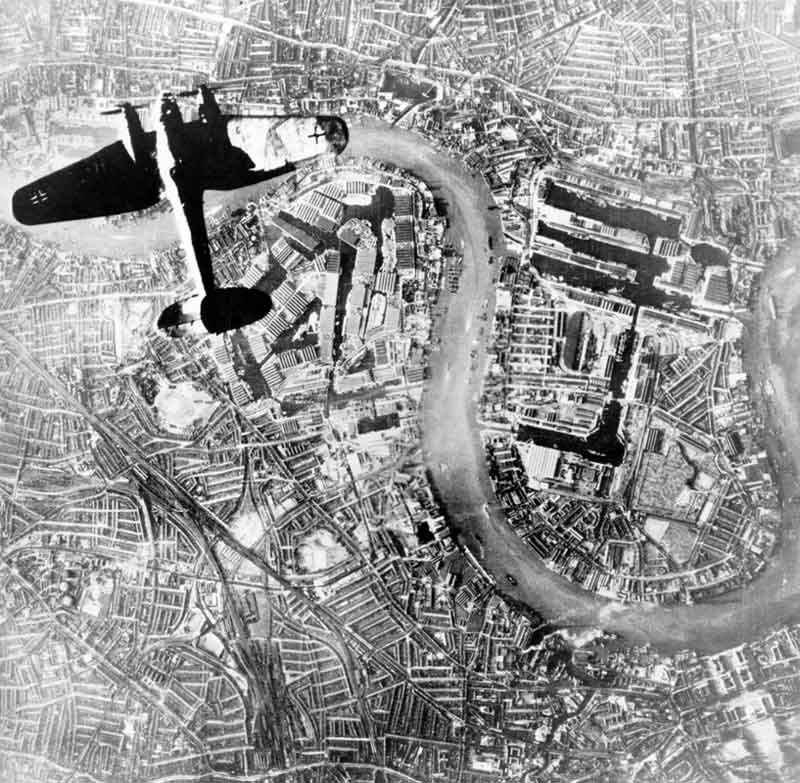
7 September 1940: at about 4:00 p.m., the Blitz of London began with the German Luftwaffe attacking the city with 348 bombers escorted by 617 fighters. After dark, a second wave of 247 bombers attacked using the fires from the earlier attack to guide them.
Hauptman Hajo Hermann reported:
“A very clear night. . . everywhere, the German bombers were swarming in. . . Everything was lit up by fires, like a huge torch in the night.” Until 7 September, orders were very strict to not bomb indiscriminately, “But now, for the first time, we were allowed to bomb regardless.”
— Duel of Eagles, Group Captain Peter Wooldridge Townsend, C.V.O., D.S.O., D.F.C. and Bar, R.A.F. Cassell Publishers Limited, London, Chapter 27 at Pages 393–394.
Approximately 1,000 Londoners were killed that first night. During the Blitz, London was bombed for 76 consecutive nights.
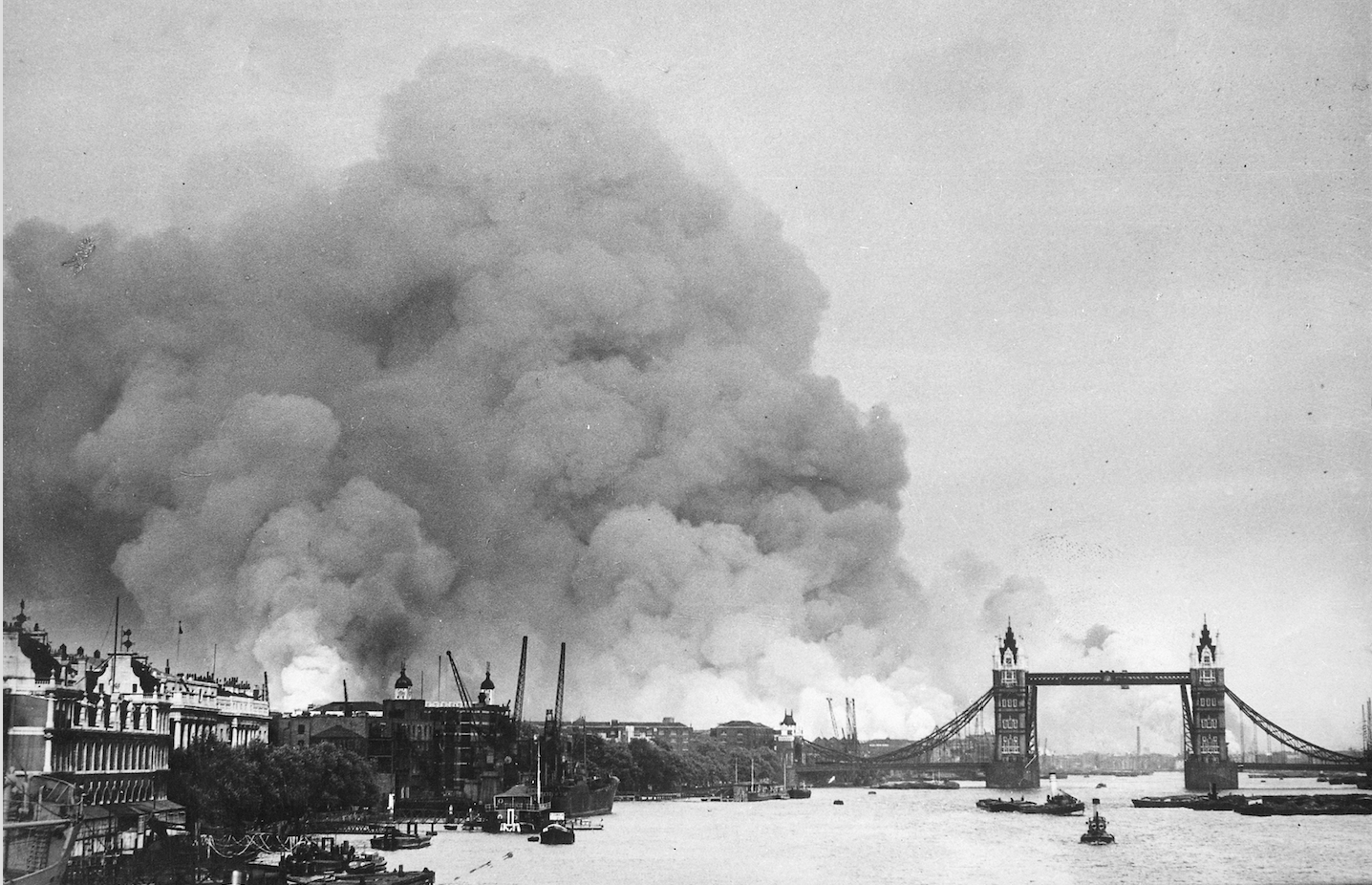
German military leaders believed that England could only be defeated by invasion. Before Germany could stage a cross-channel invasion, though, it had to gain air superiority. After weeks of relentless devastating attacks against British airfields, Reichsmarschall Hermann Wilhelm Göring made a fatal mistake. He shifted to attacking population centers.
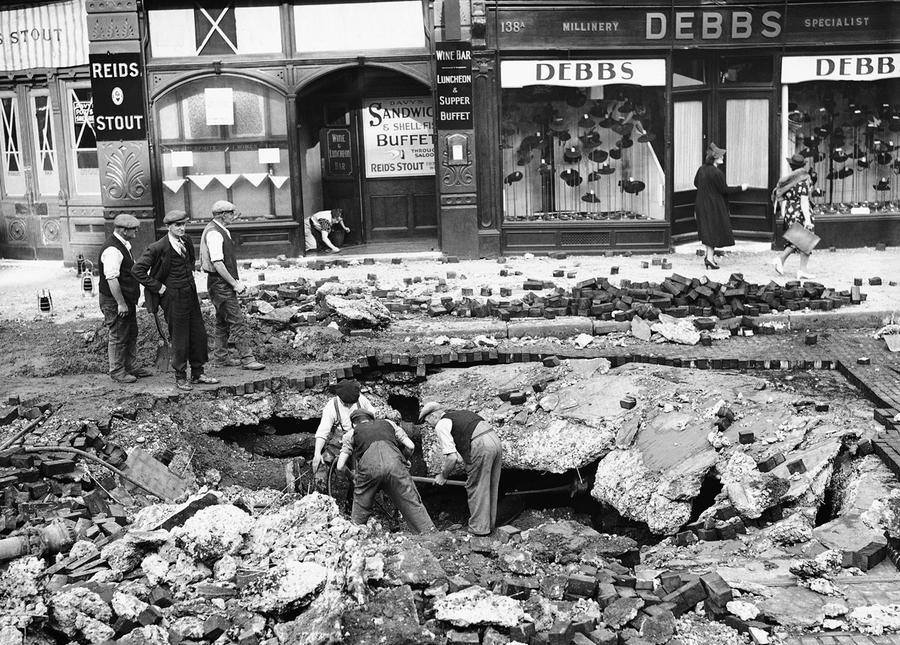
The primary purpose of the Blitz of London was to force the Royal Air Force to defend the City. Luftwaffe commanders believed that they could destroy the RAF in battle. And the RAF had to be destroyed for an invasion of England to go forward.
By the end, losses in airplanes and crews to both sides were about even, but the RAF survived, thus Germany failed in its goal. There was no invasion.
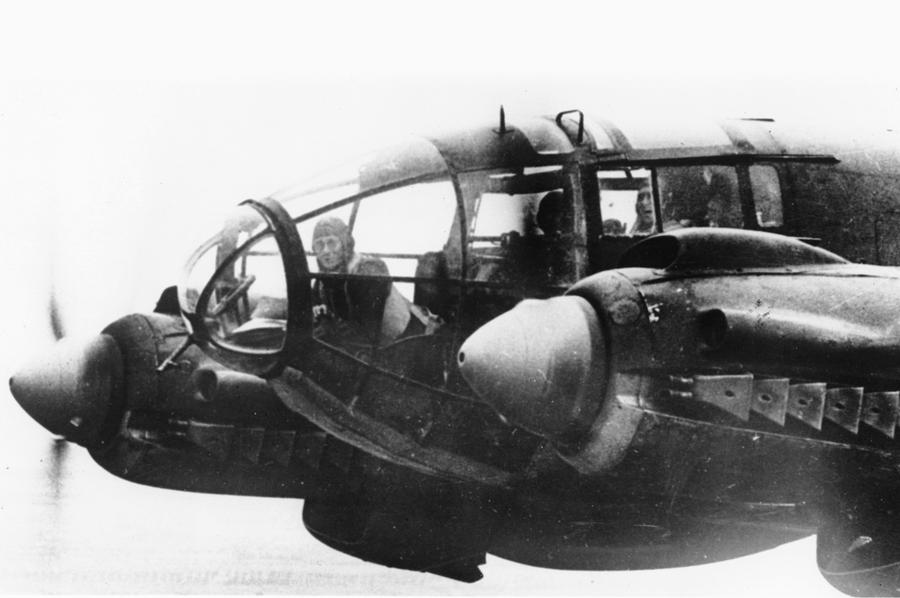
The Heinkel He 111 was the primary Luftwaffe bomber. It had a crew of 5 or 6. The airplane was powered by two liquid-cooled Junkers Jumo 211 inverted V-12 engines, producing 1,200 horsepower each, giving the He 111 a maximum speed of 254 miles per hour (409 kilometers per hour). The bomber was 59 feet (17.98 meters) long with a wingspan of 77 feet (23.4 meters). It was armed with three or more 7.92 mm machine guns, and could carry up to 4,400 pounds (2,000 kilograms) of bombs. It had a maximum range of 1,420 miles (2,285 kilometers).
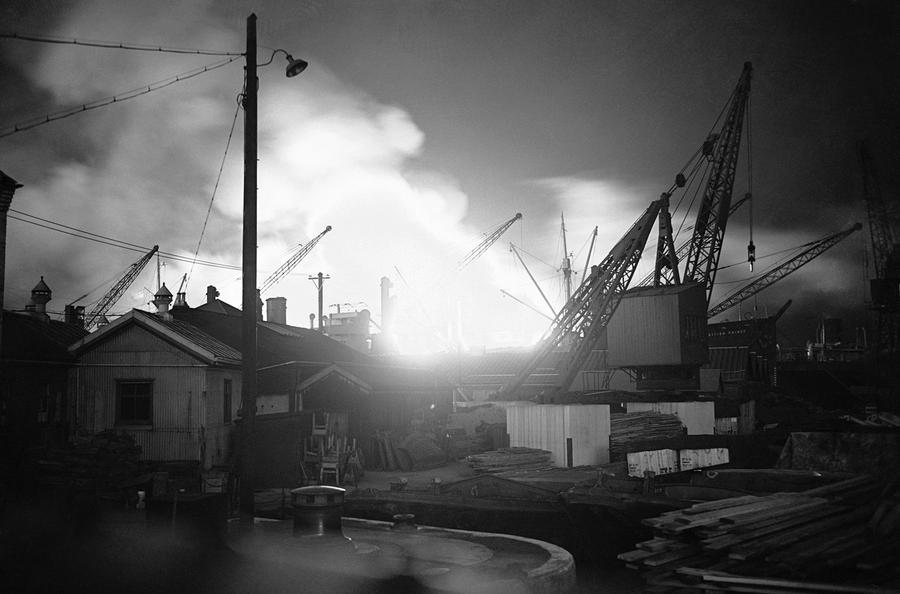
The Bomb Sight Project, sponsored by the University of Portsmouth, The National Archives, and the Joint Information Systems Committee (“Jisc”), has scanned the geographic data of every bomb that fell on London from 10 July 1940 to 6 June 1941. Interactive maps can be seen at
http://bombsight.org/#15/51.5050/-0.0900
By clicking on individual icons, information on the location and type of bomb is provided.
Below is the location of every bomb which fell on London before midnight of the first night of The Blitz, 7 September 1940:
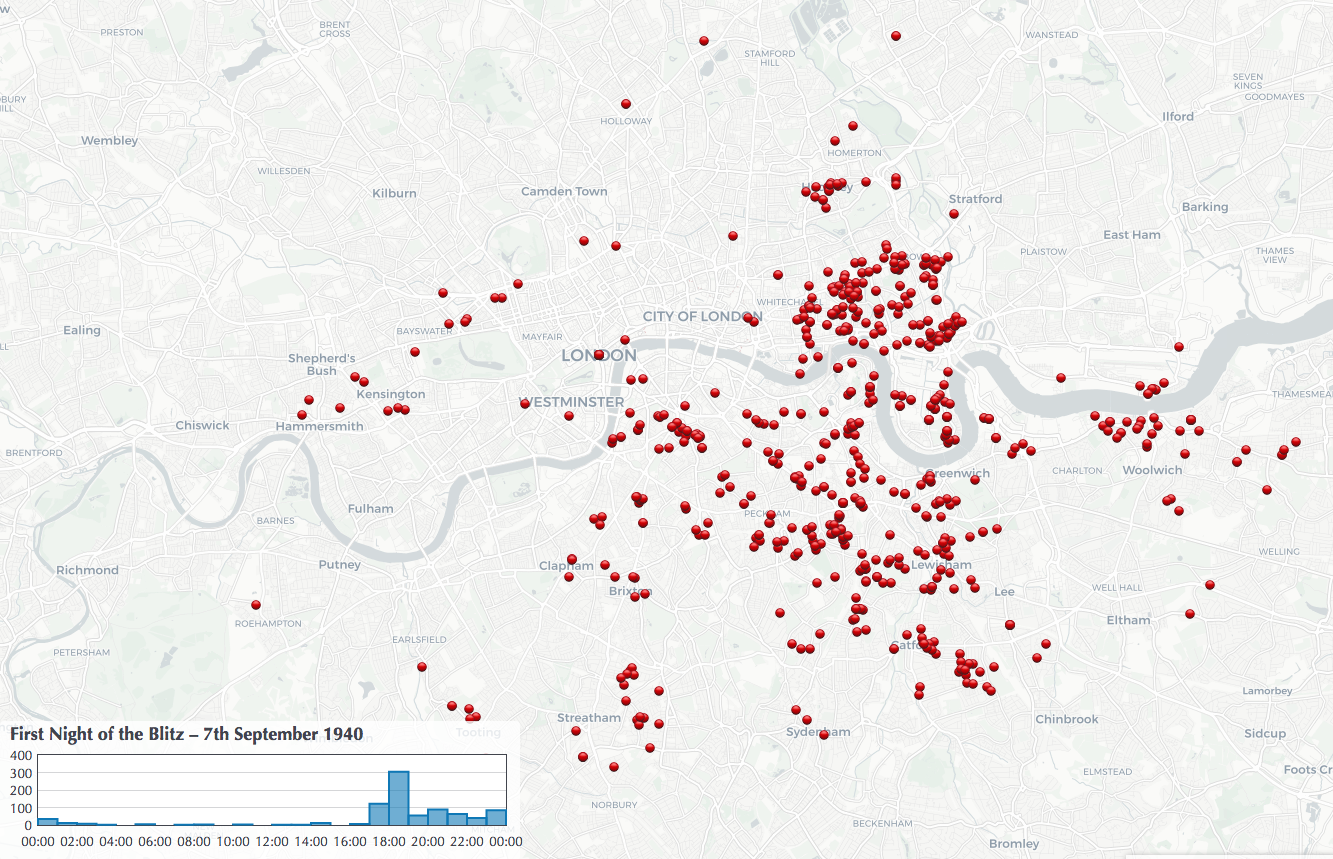
© 2018, Bryan R. Swopes